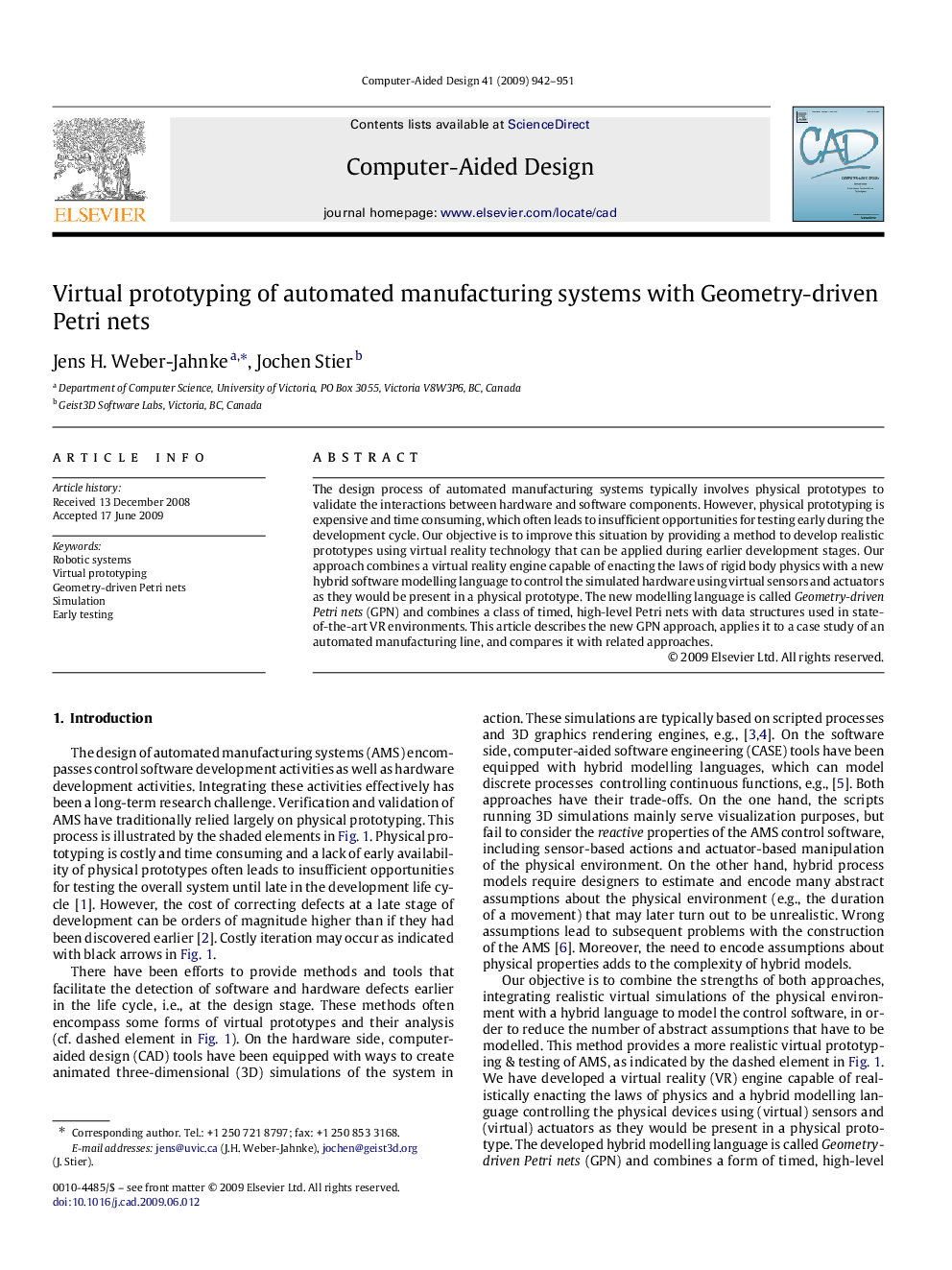| Article ID | Journal | Published Year | Pages | File Type |
|---|---|---|---|---|
| 440369 | Computer-Aided Design | 2009 | 10 Pages |
The design process of automated manufacturing systems typically involves physical prototypes to validate the interactions between hardware and software components. However, physical prototyping is expensive and time consuming, which often leads to insufficient opportunities for testing early during the development cycle. Our objective is to improve this situation by providing a method to develop realistic prototypes using virtual reality technology that can be applied during earlier development stages. Our approach combines a virtual reality engine capable of enacting the laws of rigid body physics with a new hybrid software modelling language to control the simulated hardware using virtual sensors and actuators as they would be present in a physical prototype. The new modelling language is called Geometry-driven Petri nets (GPN) and combines a class of timed, high-level Petri nets with data structures used in state-of-the-art VR environments. This article describes the new GPN approach, applies it to a case study of an automated manufacturing line, and compares it with related approaches.
